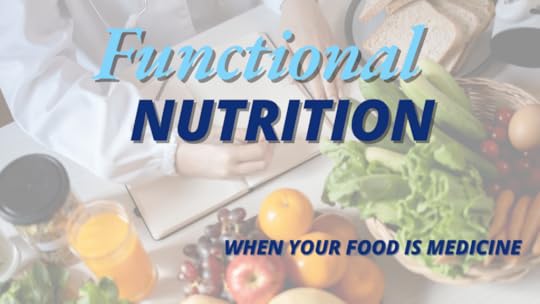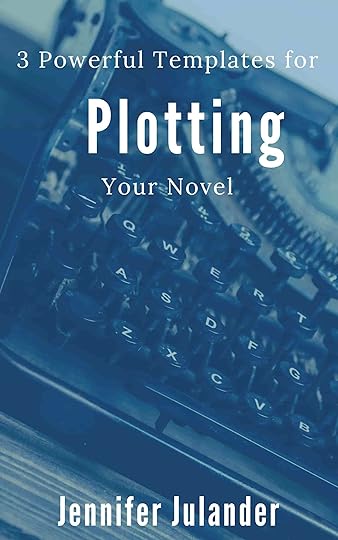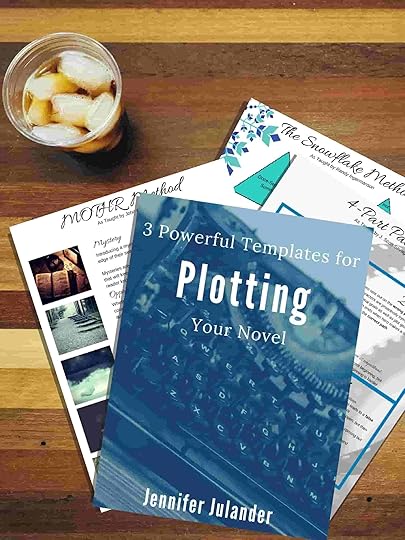Jennifer Julander's Blog
November 11, 2024
From Soil to Sip: Why Biodiverse Wines Offer Superior Taste and Health Benefits
As consumers grow more conscious of the impact of their choices, there’s a new spotlight on wine crafted through biodiversity-friendly practices. Wines produced with natural, ecologically balanced methods offer a distinct alternative to chemically-altered wines. Embracing biodiversity in winemaking doesn’t just benefit the planet—it also results in a healthier, richer, and more resilient glass of wine. Here, we explore what biodiversity in wine production means, the health benefits, and how these sustainable practices help create wines that are as good for us as they are for the earth.
What Is Biodiversity in Wine?Biodiversity in vineyards refers to creating a balanced ecosystem where diverse plant and animal species thrive. These biodiversity-friendly practices foster a healthier, more resilient vineyard environment that reduces the need for chemical interventions.
Key Practices in Biodiversity-Friendly Wine Production:Soil Reactivation: Soil is home to up to one billion microorganisms per gram. In a biodiverse vineyard, plants and microorganisms form partnerships that strengthen the entire ecosystem. Healthy soil supports robust vines, encouraging nutrient-dense, flavorful grapes.
Massal Selection: Instead of planting cloned grapevines, winemakers select individual vines that thrive in local conditions, building resilience against pests, disease, and extreme weather. This diversity helps vineyards endure in changing climates.
Building Resilience: Biodiversity fosters resiliency in the vines, allowing them to adapt to environmental changes and stressors more effectively. By cultivating various plant and animal life within and around the vineyard, producers create ecosystems that support the vineyard’s long-term health and sustainability.
Sustainable Wine Production MethodsSeveral winemaking approaches align closely with biodiversity and sustainability:
Biodynamic Wine: This method incorporates organic farming practices and follows a lunar calendar, respecting the rhythms of earth, fire, air, and water. Biodynamic wines are typically certified by organizations like Demeter International or Demeter USA, ensuring strict adherence to natural processes.
Natural Wine: Natural wine takes a minimal-intervention approach, using no additives, processing aids, or extensive chemical inputs. The fermentation process is left to occur naturally, allowing the wine to express its unique terroir without interference.
Health Benefits of Biodiverse WinesWhen you choose biodiverse wines, you’re not only supporting sustainable practices but also reaping unique health benefits. Unlike conventional wines, which often contain chemical residues and additives, biodiverse wines are crafted in harmony with nature, resulting in a cleaner, more nutrient-rich product. From reduced chemical exposure to higher levels of antioxidants and beneficial microbes, biodiverse wines offer a naturally healthier option that nourishes both body and palate. Here’s how biodiverse wine can contribute to a healthier, more enjoyable drinking experience.
1. Reduced Chemical Exposure
Biodiverse vineyards minimize or eliminate the use of synthetic pesticides and fertilizers, significantly reducing chemical exposure for consumers. Conventional wines often contain traces of these chemicals, which can affect long-term health. Biodiverse wines offer a more natural, untainted experience.
2. Higher Antioxidant LevelsGrapes grown in biodiverse environments develop stronger natural defenses against pests and diseases. These stresses often lead to higher concentrations of antioxidants—such as resveratrol and flavonoids—which support heart health, immune function, and cellular repair, making biodiverse wines a healthier choice.
 3. Rich Microbial Diversity
3. Rich Microbial Diversity
Biodiverse soil teems with a variety of beneficial microorganisms. These microbes contribute to a natural fermentation process and bring unique flavors to the wine. Additionally, natural fermentation supports gut health, offering beneficial probiotics and yeasts not found in highly processed wines.
4. Lower Sulfite ContentBiodiverse wines typically contain fewer sulfites, which are often added as preservatives in conventional winemaking. Lower sulfite levels can reduce the likelihood of headaches and allergic reactions, offering a cleaner, more natural wine option.
 Why Biodiverse Wines Taste Better
Why Biodiverse Wines Taste BetterThe flavor profile of a biodiverse wine reflects the vineyard’s unique ecosystem, imparting a depth and complexity that’s hard to replicate in chemically-altered wines. In a biodiverse vineyard, the soil’s richness and the balance of surrounding flora and fauna contribute to the grape’s terroir—the distinct taste and character derived from the environment.
Chemical wines often rely on additives to achieve specific flavors, which can mask the grape’s natural character and produce a more uniform, artificial taste. Biodiverse wines, however, carry the subtle nuances of the land itself, creating an authentic, multi-layered experience in every sip.
Environmental Benefits of Biodiverse WinemakingBeyond health and taste, biodiverse vineyards contribute to a healthier planet. By fostering balanced ecosystems, these vineyards reduce soil erosion, enhance water retention, and support carbon sequestration. They also provide habitats for native wildlife and insects, supporting local biodiversity far beyond the grapevines.
In contrast, conventional vineyards relying heavily on chemicals can disrupt ecosystems, deplete soil nutrients, and contribute to water pollution. Choosing biodiverse wines helps support producers committed to regenerative practices, benefiting both the consumer and the environment.
Biodiverse wines are more than a drink—they’re a sustainable, health-conscious choice that reflects a respect for nature and a dedication to quality. By selecting wines made with biodiversity-friendly practices, consumers enjoy not only the unique and complex flavors of these wines but also the peace of mind that they’re supporting a healthier planet. Next time you raise a glass, consider the story behind the wine and the benefits of choosing a biodiverse bottle—your taste buds and the environment will thank you.
November 5, 2024
Churn Prevention in SaaS: Using Predictive Analytics to Retain Customers
In the fast-paced world of SaaS (Software as a Service), where customers expect continuous value and seamless experiences, the risk of customer churn looms large. Churn—the rate at which customers cancel or fail to renew their subscriptions—poses a major challenge for SaaS companies, impacting both growth and revenue. But what if churn could be anticipated and prevented before customers even consider leaving? This is where predictive analytics becomes invaluable, empowering companies to spot signs of potential churn early and respond with precision.
Predictive analytics allows SaaS companies to harness their own data, interpreting behavioral and usage patterns to gain insight into customer needs, preferences, and potential pain points. Far from being a reactive approach, predictive analytics equips businesses with the foresight to create proactive, personalized retention strategies that resonate with customers. Here, we’ll explore how SaaS companies can leverage predictive analytics to reduce churn and foster lasting relationships.
Understanding Predictive Analytics in SaaSPredictive analytics uses statistical models, machine learning, and data mining techniques to analyze historical data and make predictions about future behavior. In the context of SaaS, this means examining patterns in how customers engage with a product—whether they’re regular users or showing signs of decreased activity. Unlike traditional analytics, which describes what has happened, predictive analytics looks forward, identifying who might leave and why.
Consider it as an early warning system for churn: instead of waiting for a customer to reach out with dissatisfaction or, worse, cancel a subscription, companies can use predictive insights to anticipate and address these issues before they escalate.
Key Metrics for Predictive Churn AnalysisEffective churn prevention begins with identifying which metrics are most indicative of potential churn. Some key metrics SaaS companies should track include:
Product Usage Frequency: Customers who regularly use a product are far less likely to churn. Monitoring daily or weekly usage frequency helps gauge how integral a service has become to the customer’s workflow.Feature Utilization: Which features are customers using most often? Which are they ignoring? High utilization of core features correlates with retention, while low engagement may signal an impending drop-off.Support Requests and Response Time: An increase in support tickets or delayed response times can indicate frustration and lead to churn. Tracking support patterns offers insights into customer satisfaction.Customer Satisfaction Scores (e.g., NPS): The Net Promoter Score (NPS) is a powerful indicator of customer loyalty. Low or declining NPS scores can signal dissatisfaction, while high scores correlate with retention.Billing and Payment Activity: Unusual changes in payment behavior, such as skipped payments or downgrades, can be early indicators of financial strain or decreased interest.How Predictive Analytics Helps Prevent ChurnWith these metrics in hand, SaaS companies can use predictive analytics to gain nuanced insights. Here’s how predictive analytics can proactively address churn:
1. Identifying At-Risk Customers Early
Imagine you’re able to catch potential cancellations before they happen. By analyzing usage patterns, predictive models can help you categorize customers based on their risk of churning. For instance, if you notice certain customers aren’t logging in as frequently, it’s a sign they may be slipping away.
Here’s where you can step in: consider reaching out with a friendly email, offering a quick refresher on key features or sharing a helpful guide. This proactive touch can remind them of the value they’re getting from your service and give them a reason to re-engage.
Predictive analytics can do more than just tell you who’s at risk—it can offer insights into why. If you know why customers are disengaging, you can create retention strategies that speak directly to their needs.

Let’s say analytics reveal that some users aren’t using a particular feature that could make their lives easier. Instead of a generic email, you could send a personalized message showcasing how the feature solves a specific problem. Maybe include a quick tutorial or a success story. This kind of targeted outreach feels personal, making customers more likely to stick around because they feel understood and supported.

Imagine if your support team knew what customers needed help with before they even asked. With predictive analytics, you can anticipate common issues, especially after new updates or changes, and provide resources proactively.
If a recent update tends to prompt support tickets, why not send a quick tutorial or troubleshooting tips to affected users right after the update? This way, you’re helping customers before they even realize they have a question. Anticipatory support like this shows that you’re looking out for them, building trust and satisfaction along the way.
4. Offering Incentives to High-Risk CustomersWhen you identify high-risk customers, offering a well-timed incentive can be the key to keeping them. Maybe it’s a discount, a loyalty bonus, or even a free upgrade for longtime users. These small gestures can go a long way in making customers feel valued.

Think of it this way: if you have a customer who’s been with you for years and now shows signs of drifting, a personalized offer might be the reminder they need to stay. It’s like saying, “We appreciate you,” which often has a bigger impact than you might expect.

Predictive analytics isn’t just about preventing churn in the here and now; it’s also a tool to understand how your product can evolve to keep customers happy in the long term. By noticing trends in how users engage with certain features, you can make adjustments that enhance their experience.
Say you see that many customers aren’t using a particular feature. Maybe it’s hard to find, or maybe it’s not clear how it could benefit them. You could revamp the feature, improve its usability, or simply promote it more prominently in your app. Aligning your product with customer needs makes it more likely they’ll stick around, because it shows you’re always working to improve their experience.
For SaaS companies looking to leverage predictive analytics effectively, here are some best practices to keep in mind:
Data Integration: Ensure that data from different customer touchpoints (e.g., support, billing, usage logs) is unified for a holistic view of customer behavior.Regular Model Updates: Customer needs evolve, so predictive models should be recalibrated regularly to reflect the latest trends and data.Cross-Department Collaboration: Churn prevention benefits from collaboration between product, marketing, and support teams, ensuring that insights are shared and acted upon company-wide.Focus on Actionable Insights: Predictive analytics is most effective when it translates data into specific, actionable strategies that directly address customer needs.November 4, 2024
Functional Nutrition: Using Food as Medicine

Throughout history, humankind has often turned to nature for cures and comfort. The concept that food serves not just to nourish but also to heal is both ancient and revolutionary. Now, as science converges with centuries-old wisdom, we’re witnessing the emergence of functional nutrition—an approach that sees food as a complex, purposeful ally in the journey toward health. This philosophy harnesses the innate qualities of certain foods to support bodily functions and mitigate ailments, serving as a bridge between our inner biology and the external world.
What Is Functional Nutrition?Functional nutrition is far more than a regimen of restrictive diets or calorie counting. Think of it as a bespoke health approach, one that respects individual differences, recognizing that each person’s body is as unique as a fingerprint. At its core, functional nutrition aims to address the intricate root causes of health issues, considering the body as a dynamic ecosystem in which each part affects the whole.
Where conventional diets may focus simply on calories or macros (proteins, fats, and carbohydrates), functional nutrition weaves together nutrients in harmony with the body’s needs. It’s an approach designed to restore balance, drawing on nutrient-rich foods to support healing, much like an artist carefully selecting colors to complete a masterpiece.
Key Principles of Functional NutritionTo better understand the ethos of functional nutrition, let’s delve into its foundational principles:
Bioindividuality: Imagine the complexity of one’s biology—genetics, lifestyle, environment, and mental health—all intricately intertwined. Functional nutrition honors this individuality, crafting dietary recommendations to suit the unique requirements of each person.Root Cause Approach: Unlike methods that merely skim the surface, functional nutrition digs deep, seeking to identify and address the underlying imbalances or deficiencies behind symptoms, often through nutrition and lifestyle adjustments.Food as First-Line Therapy: This philosophy treats food as an essential tool in healthcare. It’s a philosophy that says, “Start with the kitchen before the pharmacy.” In many cases, nutrient-rich foods may support the body’s healing processes without the need for pharmaceuticals.Functional Nutrition for Common AilmentsLet’s explore some common health challenges and how functional nutrition offers targeted, supportive solutions:
1. Inflammation
Chronic inflammation has been called the silent flame, an unseen force linked to conditions such as arthritis, cardiovascular disease, and even certain cancers. Functional nutrition views inflammation as both a culprit and a guide, directing attention toward foods that soothe rather than stoke this hidden fire.
Key Nutrients: Omega-3 fatty acids, antioxidants, and polyphenols
Recommended Foods: Fatty fish (salmon, sardines), turmeric, leafy greens, berries, and olive oil
Example: Turmeric, often referred to as “nature’s golden remedy,” contains curcumin, a compound so potent it has been likened to anti-inflammatory drugs in its ability to ease inflammation. Regularly incorporating turmeric into meals or taking it as a supplement can be a balm for inflammatory conditions.
The digestive system, often called our “second brain,” influences everything from our immune response to mood regulation. Functional nutrition attends to the gut’s needs, utilizing prebiotic and probiotic foods to support a balanced microbiome and ease issues like IBS or leaky gut.

Key Nutrients: Fiber, probiotics, and prebiotics
Recommended Foods: Yogurt, kefir, kimchi, asparagus, bananas, and whole grains
Illustration: Probiotic-rich foods, such as yogurt and kimchi, act as peacekeepers for the gut. They replenish beneficial bacteria, balancing the microbiome much like a well-tended garden. Prebiotic foods like bananas and asparagus serve as nourishment for these bacteria, fostering a healthy environment for gut flora.
3. Energy and Vitality
Energy—true, sustainable energy—cannot be drawn from caffeine alone. For those who find themselves constantly tired, functional nutrition offers nutrient-dense foods that support the body’s natural energy production, filling in gaps that may cause sluggishness.
Key Nutrients: B vitamins, iron, magnesium, and antioxidants
Recommended Foods: Lean meats, nuts, seeds, dark chocolate, and leafy greens
Illustration: Dark chocolate, a beloved indulgence, is also rich in magnesium—a mineral vital to energy production and stress reduction. When enjoyed in moderation, it serves not only as a treat but as a source of enduring energy.
4. Stress and Mental ClarityJust as our minds influence our bodies, so do our diets influence our minds. The concept of food as brain fuel takes center stage in functional nutrition, emphasizing nutrients that bolster mental resilience and alleviate the impacts of stress.

Key Nutrients: Omega-3s, magnesium, B vitamins, and antioxidants
Recommended Foods: Walnuts, fatty fish, whole grains, spinach, and dark leafy greens
Illustration: Omega-3 fatty acids, found abundantly in fatty fish, are essential for brain health, much like oil to a finely-tuned engine. Studies suggest they may help to reduce symptoms of anxiety, supporting mental clarity and emotional balance.
5. Skin Health
Functional nutrition celebrates the skin as the body’s reflection of internal health. Foods rich in antioxidants, healthy fats, and vitamins nourish the skin from within, promoting a radiant complexion and fighting signs of aging.
Key Nutrients: Vitamin C, vitamin E, beta-carotene, and healthy fats
Recommended Foods: Berries, nuts, carrots, and avocados
Example: Vitamin C, often found in vibrant berries, is a crucial component of collagen production, the protein that keeps skin supple and youthful. Consuming these fruits regularly is akin to giving the skin a natural, gentle polish from the inside out.
Practical Tips for Adopting Functional NutritionTransitioning to a functional nutrition approach need not be an overwhelming overhaul. Here are some gentle steps to begin:
Prioritize Whole Foods: Think of whole foods as nature’s perfected recipes. They’re often more nutrient-dense and harmonious with the body’s needs than processed alternatives.Mindful Meal Prep: Preparing meals in advance allows one to consciously choose nutrient-rich ingredients, reducing the temptation to reach for convenient but less nourishing options.Seek Guidance: Working with a nutrition professional, especially one trained in functional medicine, can personalize this journey, aligning it with individual goals and health needs.
Functional nutrition is more than a trend—it is a intentional, well-rounded approach that honors the human body’s complexity and wisdom. By choosing foods that address underlying health issues, we empower ourselves to take health into our own hands. In a world often quick to medicate, functional nutrition reminds us to return to nature’s pantry, discovering remedies that are both timeless and profoundly effective.
Learn more about functional nutrition:National Institutes of Health (NIH) – Nutrition & Digestive Diseases
Provides extensive research on nutrition’s impact on health, including studies on inflammation, gut health, and chronic diseases.Website: nih.govThe Journal of Functional Foods
Peer-reviewed studies and articles on functional foods and bioactive compounds in disease prevention and health promotion.Website: sciencedirect.com/journal/journal-of-functional-foodsAmerican Journal of Clinical Nutrition (AJCN)
Articles on diet, nutrition, and food science, often focusing on how specific nutrients impact health.Website: academic.oup.com/ajcnInstitute for Functional Medicine (IFM)
Resources and guidelines on the principles of functional medicine, including case studies and nutrition insights.Website: ifm.orgPubMed – Nutrition and Functional Health Studies
A comprehensive database of studies on nutrition, inflammation, digestive health, and more.Website: pubmed.ncbi.nlm.nih.govHarvard T.H. Chan School of Public Health – Nutrition Source
Provides accessible information on nutrition science, with a focus on chronic diseases, mental health, and holistic wellness.Website: hsph.harvard.edu/nutritionsourceInternational Journal of Environmental Research and Public Health
Features studies on dietary interventions, bioindividuality, and environmental factors in health and wellness.Website: mdpi.com/journal/ijerphCleveland Clinic – Center for Functional Medicine
Articles and research updates from a functional medicine perspective, often addressing diet’s role in managing chronic conditions.Website: clevelandclinic.org/functional-medicineNutritionFacts.org
Evidence-based articles and videos on functional foods, nutrients, and holistic approaches to health, curated by Dr. Michael Greger.Website: nutritionfacts.orgPrecision Nutrition
Offers resources and articles on personalized and functional nutrition, with a focus on practical dietary applications. precisionnutrition.comDecember 13, 2021
How to Increase Online Sales with Video in 2022 (Without Spending a Fortune)
If you’ve been looking for ways to increase conversions for your website or ads, you may have already come across advice on leveraging video to improve sales.
In fact, you may be groaning right now, thinking you don’t have the funds for an expensive video team, or the time to do your own editing.
But don’t leave just yet. While producing enough video can be a headache at times, there are some easy ways to leverage video without spending tons of time or money.
How to Increase Sales Volume with Easy-to-Create Video ContentYou don’t just want any video content. Any business owner knows that the best videos, the ones that convert, have high-quality content.
That’s why it can be so overwhelming to think about creating your own videos. However, here are some quick tips for creating high-quality content in as little time as possible.
This way, you can increase sales in 2022 without making a ton of extra work for yourself.
1. Get customers to submit video testimonials and increase your salesAdding the right video to a webpage can increase conversions by as much as 80%, according to marketing and SEO expert, Neil Patel.
But it can be challenging to get enough reviews, much less video testimonials. So how does a business owner convince customers to get in front of a camera?
It’s actually easier than it sounds. With Vocal Video, you can easily send a link to customers requesting a testimonial. By clicking the link, the recipient can record their own video testimonial and send it back to you.
Not only does this streamline your video testimonial process, but it significantly cuts down the amount of time you would otherwise spend reaching out to prospects, scheduling a time slot, and recording their testimonial in person.
Plus, you can incorporate video interviews into your Vocal campaign. Capture your customer’s emotional reaction to your brand through a one-on-one virtual interview. Next, feature the interview in your social media ads and watch your sales transform!
2. Promote your company culture to show customers what sets you apartTelling your brand’s story is the #1 way to connect emotionally with your audience.
According to The Center for Sales Strategy, companies with a strong culture saw a 4x increase in sales. When clients see that you are a brand with values and deep meaning behind what you do, they’re that much more likely to develop brand trust and loyalty.
This is another factor that makes video one of the best marketing strategies to increase sales. There’s no better way to clearly communicate your company’s vision and culture than through video.
Again, this might sound like a time-consuming project. There are CEOs to interview, employee testimonials to record, and lots of clips to parse together.
However, Vocal Video’s software makes it easy to collect these stories from individuals throughout the company without ever leaving your desk.
Even better, you can collect and edit the videos right within the Vocal Video portal. No special equipment, experience, or software required.
3. Create a product video to improve conversion rate and skyrocket salesIf you’ve been wondering how to increase sales through ads, a product launch video just might be the thing you need.
In a 2020 study, Hubspot found that 73% more consumers will make a purchase if they saw a video showcasing the product first.
Before you launch a product, you can use Vocal Video to reach out to anyone who participated in the product testing phase. Similar to video testimonials, you can request unboxing videos, product reviews, and live demos.
Product videos, especially those with an honest opinion from users, are one of the best ways to increase sales and earn customer trust.
Plus, get the most out of your efforts by asking your testing community to share their product reviews on social media or in an Amazon review! This is a fantastic way to get the most coverage possible from the videos you request.
Ready to Increase Conversion Rates in 2022?If you’ve been thinking about trying video but aren’t sure, Vocal Video is a great tool to get started. It’ll save you tons of time, and it’s one of the easiest ways to get high-quality video without overloading your schedule or breaking the bank.
How do you plan to improve conversion rates in 2022? Tell me in the comments!
Note: This post is not sponsored by Vocal Video, and the author receives no compensation for featuring this brand.
March 4, 2021
How to Write 2,000 Words a Day and Surpass Your Camp NaNoWriMo Goal!
Camp NaNoWriMo is just around the corner, and many writers are gearing up for this year’s first bout of writing insanity. Whether you’re just joining the April NaNoWriMo for inspiration, or you’re joining the thousands of writers who share a word count goal of 50,000 words in a month, you’re not alone.
I successfully completed NaNoWriMo in November 2015, when I was drafting Green Lady. The novel was already written, but I wanted to add depth to many of the character perspectives. I compiled a list of scenes I wanted to write and I set a word count goal of 1,666 words/ day.
Despite being the mother of a one-year-old and eleven months pregnant with my second child, I overshot my word count goal and ended up with 53,000+ words.
How did I do? Well, I’ll tell you this: It was no walk in the park. I haven’t joined the NaNo frenzy since, but I have set some pretty intense writing goals and done this in smaller portions several times since.
Map Your NovelBefore you say, “I’m a discovery writer, I don’t plot my stories,” know that I am not a plotter. So, from one pantser to another: Before you can write at the speed of 2,000 words/ hour, you must know what you’ll be writing.
You don’t have to know every single word or connecting point, but you do need to know what’s driving your plot. Where are your characters going and what gets them there? What are your major scenes? What do you want the reader to feel? How is the major conflict resolved?
Having these answers will help things fall into place as you write.
[quote from author interview– “If you get writer’s block, it’s because you haven’t done enough thinking.”]
If you’re new to plotting and outlining, try creating a mind map. Just spend an hour or so mapping everything you know about your book. Once you have it all out in front of you, turn it into a bulleted outline.
If you’re anything like me, there’s a strong possibility your outline will evolve as you get deeper into the novel. This is totally fine, but keeping an outline on hand throughout the drafting process will give you something to refer back to, especially if you get writer’s block.
ResearchMapping your novel ahead of time will help you pinpoint what you’ll need to research. Think: weapons, clothing, period-specific technology, mannerisms, available building materials and resources, etc.
Don’t spend an eternity on research. But do, by all means, pinpoint things that tie in directly to the main plot.
For example, there’s a time-travel steampunk fae novel in my future. I started writing the beginning, but soon realized I’m terrible at history (I know what happened, of course, but not the exact dates). The fact is, I’ll have to do some extensive research on Victorian times, and possibly many other time periods as well, before I can really start writing.
If you’re like me, you may feel you won’t know what you need to research until you’re elbows-deep into your draft. That’s okay, and if that’s what works for you, then roll with it.
However, for the purposes of NaNoWriMo, I highly recommend writing yourself a note when you encounter something you need to research. Personally, I use brackets and all-caps so I can come back to my notes later on.
For example– [RESEARCH: When electricity became common in home in Victorian England? Depending on findings, the character will either strike a match to light a gas lamp, or turn on an electric lamp].
And I leave it at that. This detail isn’t integral to the plot. It doesn’t really change anything, and when it comes to plot development, it’s honestly a detail I may not need to worry about too much. But readers of Victorian literature will notice the little details, so I’ll get it right for them.
Add notes to your manuscript however you prefer. I like the big, glaring notes because I can’t ignore them. But the main point is to free up time, keep yourself from dwelling on things that can wait, and get your story onto paper as fast as possible.
This is one of the biggest benefits to NaNoWriMo: the faster you can get your story written, the more consistency it will have.
You won’t have to backtrack and figure out what this one character said in a previous scene, because you wrote it just a week or two ago. Additionally, those moments of epiphany will be fresh in your mind and more likely to make it onto paper before you forget them.
Create Reference CardsCharacter reference cards are a fantastic way to set yourself up for success. I think of these as a miniature, portable version of a storyboard.
Particularly if you haven’t been working on your novel in a while, or if it’s brand-new to you, these cards can be a lifesaver during your writing spree.
You can create reference cards for characters, weapons, settings, myths, creature attributes, technology, or the rules of magic.
These cards are designed to outline important story traits that will help you drive the plot.
Similar to not spending too much time on research, don’t run off and create a 1,000 card deck of cards. For one thing, you need the cards to be useful, and if you have too many, they’ll be difficult to use/ find.
But do consider one card for each main character that includes brief descriptions of the following:
False beliefPersonal goal, what they will try to achieve no matter what the main conflict bringsAttributes, strengths, limitationsFlaws and obstaclesPhysical mannerisms, common gesturesOther hyper-specific details that might be relevant to the plot (for example, if your character is a shapeshifter, what happens to their clothes when they change form?)Remind yourself over and over that every details should be integral to the plot–it’ll help you later on.
You could also create cards with setting attributes you want to remember later.
Or, cards for specific scenes, outlining a big reveal or a series of important events. If you use scene cards, you could consider starting with the last scene and working backward to outline where you’ll work in foreshadowing.
I recommend having no more than 10-30 reference cards depending on the size of your book. Depending on where you write, you could even stick them to a magnet board right above your desk for easy reference.
Set a NaNo Word Count GoalMost people aim to write 50,000 words during NaNoWriMo. If you’re new to word count goals, that’s roughly 250 pages, or 8.33 pages per day.
Now, you must be somewhat confident that you can write this much, or you wouldn’t be here. As a writer who’s been tracking word count for years now, I can tell you it takes time to work up to this type of output.
That’s not to say you can’t do it if you’re a newbie. But I strongly recommend getting handle on your current writing speed. Nothing is more discouraging than setting a word count goal of 1,700 words per day, and realizing three days in that it takes you two hours to write that much.
The last thing you want in the middle of NaNoWriMo is to feel like you’ve failed. This could cause you to give up entirely!
If it does take you two hours to write 1,700 words, that’s okay. The point is, it’s difficult to be successful at meeting your word count goal if you don’t know how long it will take you.
So sit down and write for an hour or so. Try to go at your top speed, and try not to stop and think while writing. After the hour is over, use the Word Count function in your document editor to see how many words you achieved. If it’s just 600 words, great. Don’t sweat it.
Do this for a week or two. Record your results each time you sit down to write, then at the end of the week, take an average.
This is your writing speed. You might think it looks dismal, but don’t worry. The more you practice increasing your speed, and the more tools you give yourself to prevent stopping in the middle of writing, the faster you’ll get.
Determining your average writing speed is vital to achieving your goal. If 600 words is truly your average output per hour, then you know what to expect of yourself.
You don’t need to feel like a failure if you only manage 600 words a day because you only have one hour to spend writing.
Instead, you need to decide: a) whether you can find a way to allocate 3 hours a day to writing; or b) whether you would be okay with a word count goal of 18,000 words instead.
Sure, if you lower your word count goal, you won’t get NaNo kudos for finishing, but you will have the satisfaction of knowing you met your goal and practiced writing as much as you could every day. If you practice this consistently over time, you can steadily increase your goal to 700 words/ hour, then 800, 900, etc.
It’s also important to realize your stamina will wane over time. I’ve gone on writing retreats and poured out 2,000 words an hour for 10 hours, only to fail to even write 1,000 words an hour the next morning. Be kind to yourself when this happens.
The numbers matter less than the act of writing itself. Far more important than word count is the time you spend immersing yourself in your novel.
Practice Hitting a Smaller Word Count Goal NOWThere’s still time to practice hitting a word count goal before NaNo! Now, don’t burn yourself out. It’s going to be a long month if you’re trying to achieve 50,000 words.
That said, there’s no harm in practicing a routine. I personally find that I do better at a writing retreat if I spend the weeks leading up to the retreat practicing hitting a smaller word count goal.
Make your goal achievable, something you know you can hit no matter what. You might even consider making your goal as small as one word per day. As ridiculous as this sounds, you’ll never write just one word. This goal practically guarantees you’ll start upping your word count.
Choose a Productive SettingA disciplined writer can write anywhere. That said, for something like NaNoWriMo, the best strategy is to purposefully write in a setting that helps you be productive.
Many writers find coffee shops conducive to writing, perhaps due to the combination of white noise and caffeine. Whether it’s a public place or your own private office, think of different places where you’ve felt the most productive.
Since NaNoWriMo is 30 days long, you’ll want to come up with a variety of choices. Chances are, you’ll end up writing in different locations throughout the month.
If possible, try to create your ideal writing space, where you can write the majority of the time. That could mean printing out some inspirational photos of your world ideas and putting them on the wall above your desk. Or, it could simply mean packing a bag with everything you want with you when you go out of the house to write.
Whatever it is, make a plan and stick to it. Consistency will help you meet your NaNoWriMo goal.
Create a Schedule & Meal Plan in AdvanceNow that you know where you’ll be going to write, take a good look at your schedule and think about where you can fit in writing time. It’s a good idea to identify multiple times of day when writing could happen.
Especially if you’re anything like me, it’s easy for one small thing to throw off your schedule. If you’ve thought of alternatives ahead of time, you’ll be more likely to still find time to write when this happens.
Here’s a schedule I’ve been using lately. Now, before you call me crazy, I don’t necessarily wake myself up at 6 AM every Saturday (trust me, I love sleeping in).
But I know that if I do wake up that early one week, it presents a huge opportunity to get a lot of writing done before my kids wake up. This gives me motivation to get enough sleep during the week so I can fit in time to write.
Writing out a schedule like might seem tedious, but allowing yourself time to really sit down and think through your habits will help you have a more successful NaNoWriMo.
When I did this, I realized I was wasting a lot of time watching Netflix and playing games on my phone. Now, I have allocated time for that on the weekends only. Writing out this schedule helped me see how little time I truly have during the week for things like watching TV.
I also strongly recommend doing your meal planning in advance. If you can, plan out the entire month. If you have it in you to prep and freeze a whole month’s worth of food, even better (this will take you an entire day).
Getting small logistical stuff out of the way can be a huge lifesaver and frees up a lot of time for writing. Just take a look at my own schedule–I give myself 30 minutes to an hour every night to cook dinner. If I prepped all my meals in advance, I’d be giving myself a lot more time.
See Also: How to Find Time to Write in Your Busy Life
Bring Out the Muse BaitAh, the ever-elusive muse. We all have one, whether you envision Calliope standing over your shoulder, or whether it’s just a feeling you get when you write.
If you’ve been writing long enough, you know there are certain factors that awaken that feeling within you. For me, it can be a variety of factors, but I’ve noticed I’m more likely to start writing with a hot beverage in front of me (even if I never drink it).
Many of these factors probably stem from your habits. For me, I spent a lot of time writing at a local coffee shop in college, because it was just an amazing place. The environment itself inspired me, from the artwork on the walls to the random bongo player who became a staple of my writing nights.
I’ve also noticed that listening to music isn’t enough for me sometimes. It’s usually best if I have headphones in. There’s something about literally plugging myself in that makes me feel more cut off from the world and helps me get in the zone faster.
Think about what factors play into bringing out your muse. Now’s the time to write them all down. And on April 1st, pull out all the stops! There’s no reason not to use every single thing you can think of to make it easier to start writing.
Eliminate DistractionsWe are all guilty of succumbing to distraction. Heck, I’m doing it right now–instead of editing, I’m finishing this post. (I’ll edit today, though, cross my heart).
I tend to stream music online when I write. I make it my personal rule to only allow two tabs open at a time– Pandora & Thesaurus.com. As I mentioned above, I don’t let myself fall into the research trap while drafting, unless the plot absolutely cannot be written without said research (this is pretty rare, especially if you spend time researching before drafting).
Sometimes, even I fail to follow my own rules and succumb to distractions. Maybe it’s because I remembered in the middle of writing that I need to send an update to my writing group, or maybe I remembered some random, urgent business need. Or something completely unrelated to writing, like forgetting a birthday party that’s coming up the next day.
This is when it becomes really useful to use an app like Write or Die. I started using this in the browser, but eventually bought the paid version. It’s totally worth the $20 I spent, and it’s become my secret writing weapon.
This is how I achieve 2,000 words an hour.
Not 2,000 words a day. Per hour.
Write or Die has different settings that allow you to really focus on your work. You can make it fullscreen, change the background color and text color, and adjust the background noise. The app allows you to set a word count goal and a timer, and then you just go.
It comes with several different “modes.” Personally, I like the “Reward” mode, which displays a background image, plays the ambiance of your choice, and gives you a chime when you hit a word count milestone. You can also set it to “Consequence” mode, which includes features like Angry Cat popping up to glare at you if you stop writing.
If you’re really hardcore, you can even set it to “Kamikaze” mode, which deletes everything if you stop writing for a given number of seconds.
I’m not some superhuman. I don’t have Flash speed fingers (though sometimes I wish I did, as it often seems my fingers can’t keep up with my brain).
But there’s something about this app that not only removes all distractions, but helps you remember not to spend time daydreaming about could-bes in your novel.
Maybe it’s because I’m a pantser, but I find this app really helps me hone in on what matters most in a given scene. Best of all, it helps me get my story out onto paper as fast as I can, improving my plot consistency and writing habits.
Write!Now that you’ve set yourself up for success, it’s time to write!
Remember, your novel will not be perfect at the end of the month. No first draft ever is. By writing in such a high volume, you’re bound to encounter major plot difficulties. Just remember that this is 100% normal, and it’s actually a really good sign.
If you encounter writer’s block, don’t worry. There are plenty of strategies for overcoming a block within a matter of hours.
February 4, 2021
How Long Does it Take to Write a Book? 5 Tips for New Authors.
How long does it take to write a book?
Before you can answer this question, first you must consider the type of book.
Are you writing an epic novel? Non-Fiction? A book of poems?
The answer will vary depending on the type of book and genre. However, it’s not uncommon for new authors to take roughly 7 years to write their first book.
Depending on the length of the book, it can take even longer.
But believe it or not, some diehard writers will tell you it’s possible to write a novel in 3 days. The less hardcore will tell you 1 to 2 months, or 1 year, is feasible.
The real answer is, it depends entirely on the content of the book.
Other factors also come into play here:
How much time can you dedicate to writing? Can you write full-time, or do you have a day job?Have you ever written something this long before?Do you know the story by heart, or are you still figuring it out?What is your average word count per hour?Are you familiar with strategies for book plotting and overcoming writer’s block?How good is your self-discipline? Are you adept at avoiding distractions such as social media and TV?The answers to these questions will play a huge part in determining your writing speed.
Why Non-Fiction is Faster to Write than Fiction.
Now, that said, don’t despair and think you’ll never finish a book. There are some real, proven strategies to getting started.
If you want to write non-fiction, there’s some good news here: non-fiction is generally much faster to write than fiction. Writers estimate it takes a few hundred hours, or 4-5 months, versus the estimated few thousand hours, or 6-7 years, it often takes to write fiction novels.
Not only is non-fiction often shorter than say, and epic fantasy novel, but writing a factual book can be a lot less work than writing fiction.
Sure, you have to do research the same as you would for any other book. It’s far easier to pinpoint what to research for non-fiction. And you don’t have to invent a magic system or figure out how technology plays into your sci-fi plot.
These things can be very time-consuming, and fiction research can be more difficult because the things you’re inventing don’t exist in real life.
So, if you’re interested in non-fiction, this could be a great place to start. Blogging and freelancing are also great ways to get your feet wet in the writing world, and can help you practice your writing speed.
If you’re like me and non-fiction sounds like a boring way to start your writing career (or if your fiction book is already in progress), don’t worry about the time it might take to finish.
I may not be able to give you a 100% definitive answer to the question, “How long does it take to write a book.” But the fact is, if it’s important to you, it’s worth the time it could take to finish your book.
How to Speed Up Your Fiction Writing (For Real!)
1. Writing software can help you keep notes with you wherever you go
Writing apps can be a big help when it comes to increasing your speed. Imagine being like me, and having about a dozen notebooks full of random notes and different versions of my book. Then losing said notebooks about a dozen different times and rewriting scenes that I’d already written.
(Albeit, scenes always turn out better the second time around… but still time-consuming and obnoxious).
Don’t be like me. Use an app like Mind Node to help you keep your thoughts organized and accessible at all times, from any device.
You’ll save yourself a lot of time if you don’t have to search for the note you wrote on a napkin that one time, in a coffee shop long long ago. That you maybe stuffed inside a notebook, or perhaps shoved into your wallet. Or maybe it has since been eaten by a small child.
2. Plot your novel to help you avoid writer’s block
I mean, how long does it take to write a book if you have to battle writer’s block every couple weeks?
This is the reality for many authors, myself included. But you’ll be far better-equipped to overcome writer’s block if you’ve done prep work to help jog your brain along the way.
For example, having an outline can help you remember what drives the plot. It can also help you spot when your storyline has gone on a tangent.
For me, an outline also helps me remember why I’m writing, and what I want the reader to feel during each stage of the book. This can help me refocus and get out of a block more quickly than not having an outline.
Check out my full post on overcoming writer’s block (plus a free download of my ebook, 12 Writer’s Block Hacks You Haven’t Tried).
3. Research as much as you can in advance
As I mentioned earlier, fiction writing can be unpredictable. Perhaps it’s because I’m not much of a plotter, but I have yet to fully anticipate everything I need to research for my novel in advance.
That said, you can still conduct research before you write. Use your outline to pinpoint things that are relevant to the plot. Write down the different aspects of your world that are necessary to the plot, too, and identify what you’ll need to research for worldbuilding.
For example, I knew I needed to research maritime cultures before drafting Curse of Brys. There were many details that needed to be solidified so I could simply tell the story: building materials, the sustainability of an island culture, trade relations, mythology, and so much more.
Now, not everything was completely addressed before I started writing. As I wrote, there were certain things I realized I should’ve researched more in depth (like what my MC would need to know to navigate a ship through a hurricane… go figure).
There is some leeway because you might be inventing new plants, animals, or building materials. That’s fine, but researching the way things work in real life will help you make your world more believable.
4. Practice writing every day & increasing word count speed
Practice makes perfect!
Or, as my band teacher used to say, “Perfect practice makes perfect!” When you perfect your writing practice, you get a lot more out of your time.
You’ll also be more efficient if you write a little bit every day, versus writing a whole bunch every once in a while. It’s far easier to remember what you just wrote the other day than it is to sift through your story to remind yourself what you wrote a year ago.
Focusing on your hourly word count can also help you increase your writing speed. It doesn’t really matter where you start, as long as you can increase your word count over time.
5. Save editing and re-reading for later
Nothing slows down the drafting process like revising your book.
Trust me, I completely understand the temptation to edit while drafting. Sometimes I just have to write with my eyes closed so I don’t try to revise what I just wrote.
If I learned anything during the revision process for my first novel, it’s that it doesn’t matter how many times you revised your book to begin with; you will always revise it again and again.
Revisions can get really messy. Editing tends to have a domino effect. When you change one thing in Chapter 10, suddenly you have to go back and change Chapters 1-9, and maybe the end of the book, too.
Save yourself the headache. Don’t make changes until the book is done (or nearly done). Chances are, you’ll go through multiple drafts of your manuscript. There’s very little point in having perfect syntax in a scene that you’re just going to delete later.
January 6, 2021
How to Find Time to Write in Your Busy Life
Life is busy. It’s easy to get stumped on how to find time to write in the face of everything else that you have to do. Especially if you work full-time, setting aside that precious time to focus on your writing can become a real challenge.
The older I get, the more I feel the pressure of other responsibilities trying to get in the way of my writing time. It’s easy to allow it to happen, and once you do, your carefully-maintained writing habits can quickly become a thing of the past.
However, there are also some tried and true strategies for maintaining that writing habit, even when life demands more from you.
1. Identify distractions that hold you back from writing.
There are so many distractions in our world. Think about your daily habits. Do you come home and veg out on Netflix for 3 hours every night? Do you let yourself play Candy Crush even though you know it’s not productive?
Now, I’m not saying you should cut these things out of your life entirely. Particularly if you spend time doing these things often, you’ll want to leave room to keep doing them. But give yourself a set time for these activities so they don’t encroach on your writing time.
2. Set aside dedicated time for writing and treat it like your job.
If you think you don’t have time to write, chances are you just aren’t making time.
Jot down your daily habits in the form of a schedule. This will help you identify times when you could be writing instead of doing something else. Particularly once you’ve limited distractions, finding time to set aside for writing becomes easier.
Don’t stress about giving yourself huge chunks of time to write. Rather, try to find 30 minutes to an hour each day, or every other day, that you can dedicate to writing.
The point is to make this a regular habit, so you want your goal to be realistic.
Once you’ve decided on a goal, stick to it like you would get fired from your job if you didn’t. Treating your writing habits like your day job will help you create a more regular routine.
3. Let go of guilt an perfectionism that can stop you from writing.
Do you ever think you’re not ready to start writing yet because it needs to be perfect and you’re just not there yet?
Or, do you stress out so much about the fact that you won’t meet your writing goal for the day, that you just can’t bring yourself to even start writing?
Well, cut it out. I know it’s challenging to get past feeling like you shouldn’t even bother because it won’t be perfect, or you won’t meet your goals. But you have to stop guilting yourself into not writing.
Otherwise, you’ll never find time to write, because your time will be consumed with these worries.
Recognize that your writing will not be perfect the first time, or even the thousandth time. This is completely normal, and it’s okay if it isn’t perfect today, or tomorrow, or even a year from now. But you won’t ever get there if you don’t get it onto paper first.
It’s also okay, and normal, to experience feelings of helplessness, frustration, and being lost in the writing process. Every writer on the face of the Earth has felt this, for all of time, and it doesn’t mean you shouldn’t write.
4. Ask yourself why you’re doing this. Why is writing so important to you?
If you just asked yourself, “Why even bother?” because of point #3 above, you may have already answered this for yourself.
Why are you doing this? Why do you want to write?
If it’s important enough, you’ll make time for it.
And if it’s that important to you, it’s not a bad idea to remind yourself why on a regular basis. Make yourself an inspiration board, or simply write it down and keep it on your fridge.
Whatever the method, remind yourself often why your writing matters. It can be motivating in those moments when you really don’t feel like making yourself write.
5. Create a routine to signal your brain that it’s writing time.
Many writers have a creative routine that helps them maintain regular writing habits.
For me, making coffee and playing music helps me get into writing mode. I struggle to start writing without these factors, so I tend to carry headphones wherever I go. When I make writing pit stops, it’s often at a coffee shop, for this reason.
For others, it might be lighting a candle, or visualizing opening a “writing box” and closing the “everything else box.”
Think about your writing routine. Do you have one? How does it help you? How can you replicate those factors wherever you go to increase the likelihood you’ll find time to write?
If you don’t have a creative routine, think about the things that make you feel inspired. How can you incorporate those things into a daily routine to wake up your creative mind?
6. If you have kids, get creative about your writing habits and location to make more time.
If your kids are anything like mine, they like to button mash your keyboard instead of letting you write. They could be playing outside together, perfectly content, but the moment you open your laptop, it’s all “fjlfjejoijewoifowenfklw.”
But you’re a parent, and if anyone is a master of distraction, it’s you.
I don’t do this as often as I used to, but when my kids were 2 and 3 years old, I used to take them to a restaurant with a PlayPlace a few days a week. I would bring my laptop and let my kids run wild where I could supervise with minimal attention.
Of course, this only gave me an hour max to spend on writing, and some days my kids required more direct supervision than others. But it was a far cry from trying to get anything done at home, where the kids wanted constant attention.
I was always sure to reward them for good behavior, and I focused on spending extra time with the kids before and after the PlayPlace (otherwise, they wanted my attention at the PlayPlace, too).
If you don’t like fast food places (believe me, I don’t, but I learned to find the cleanest ones), there other options that offer this type of environment.
There’s even a coffee shop near me that offers huge buckets of Legos and action figures for kids (and adults) to play with. The kids love going there while I write, and I’m often able to write for an hour before they’re over it.
7. Plan a business retreat to get in some extra writing time.
While letting the kids play somewhere that doesn’t require a ton of supervision is a great strategy to help you find time to write, there’s something to be said for 100% focus on your writing.
Particularly if you have a big project (hello, novelists!), the value of uninterrupted writing time can’t be overstated.
8. Create extra time in your day to write by waking up early or staying up late.
Yeah, yeah. The classic “successful people wake up at 4 am” garbage.
You don’t have to wake up at 4 am to be successful (J.K. Rowling says so).
But you do have to budget your time. Maybe you’re like me and you stay up until midnight watching Netflix on a weeknight when you know you shouldn’t.
Then, you roll out of bed and get to work on time (barely). You work, rush home, make dinner, do laundry, collapse on the couch, and by this point, your willpower is effectively gone.
It’s not that there isn’t time to write. It’s that you didn’t make time.
Perhaps, if this is true for you, it’s because you weren’t mindful about how you’re spending your time.
Whenever I find myself wondering how to find time to write, I usually realize I haven’t been getting enough sleep. So, I start going to bed earlier and getting up earlier (not at 4 am though). I get my writing done first thing in the day, before I go to work (or, worst case, during my lunch break… because I woke up early enough to take a lunch).
It’s not that there’s any more or less time in my day than there was before. But suddenly, when I start budgeting my time toward the things that are most important, I’m able to find time to write again.
9. Get better at planning ahead in other areas of your life to ensure you have enough time to write each day.
Meal prep. Cleaning schedule. Grocery shopping. Bills. One-time special events.
All of these are factors that regularly get in the way of my writing time.
Some of this comes back to budgeting time again. Whenever I’m able to get on top of how I use my time, I also find myself scrutinizing the things on which I spend my time.
Meal prepping can make or break a week for me. It’s the difference between scrambling to get my lunches together in the morning, or casually walking out of my house at the last minute because everything is ready to go.
When I’m behind on cleaning, I struggle to focus on writing time. Often, I feel that I can’t start writing until the chores are caught up. Then, before I know it, my entire day is gone (but my house is clean!)
Being a little more disciplined with doing chores every day (Every. Single. Day.) helps me free up my time and energy during the weekend.
I’ve even started using curbside pick up at the grocery store more often. See, I had an epiphany the other day–I realized it takes me, literally, two hours to go grocery shopping. Whereas it takes 30 minutes to plan a week’s worth of meals and order my groceries online, and another 5-10 minutes to pick up at the curb.
10. Focus on the things that are truly important in your life, not just writing.
We’ve talked a lot about the importance of writing, and how to find time to write.
But the truth is, there are plenty of things that are more important than writing in your life. Maybe it’s spending time with loved ones, or practicing self-care.
Even Stephen King agrees that writing shouldn’t consume all of your time.
“It starts with this: put your desk in the corner, and every time you sit down there to write, remind yourself why it isn’t in the middle of the room. Life isn’t a support system for art. It’s the other way around.”― Stephen King, On Writing: A Memoir of the Craft
And the fact is, just like with everything else, if you make time in your life to fill your cup and take a break from writing, it will be more fulfilling when you do sit down to write.
I look at it this way: My writing means nothing to me–being a successful author means nothing to me–if it comes at the expense of my relationships.
Friends & family will be better able to support your writing habits when you dedicate time to them, too.
Many writers will agree that getting support from friends and family can make a huge difference in your ability to write consistently.
However, your friends and family are more likely to be supportive if they don’t feel that your writing habits don’t equal you avoiding the people who matter in your life.
Don’t wait to start changing your writing habits–set aside time to write today!
Do you ever make a New Year’s resolution to work out more often, but you keep telling yourself, “I’ll start tomorrow.”
Writing is like a workout for your brain. It’s hard. Sometimes, it’s painful. And it’s much harder to get started if you’re out of practice.
Increase your chances of making more time to write every day by starting now. If you fail miserably, start again, and keep pushing.
And who knows? Maybe you’ll build up your writing stamina in time to join Camp NaNoWriMo!
April 11, 2019
Sci Fi Thriller, “Fade,” by Nick Perkins.
Nick Perkins, author of the genre-bending Sci Fi Thriller, Fade, shares insights from his writing experience.
Fade is a Sci Fi Thriller novel about two lovers, Jack and Alice, who go on a beach-side retreat to get away after receiving “devastating news.” But when Alice disappears and strange thing start happening, Jack must confront a mysterious presence, called the Fade, to save her.
1. What inspired you to write Fade?
 Writing Fade was a way of dealing with a forced separation from a friend, a friend who had helped me through periods of anxiety and depression. It was my way of keeping their presence in my life. I had previously written short stories, which eventually became my two collections White Line and Dark Thoughts, but I was finding short stories were no longer enough to deal with the things I was trying to deal with. Short stories are too focused, not enough room to widen the perspective. I was actually writing a different long story when the basis of Fade popped into my head, and it was such a powerful thought I just had to write it.
Writing Fade was a way of dealing with a forced separation from a friend, a friend who had helped me through periods of anxiety and depression. It was my way of keeping their presence in my life. I had previously written short stories, which eventually became my two collections White Line and Dark Thoughts, but I was finding short stories were no longer enough to deal with the things I was trying to deal with. Short stories are too focused, not enough room to widen the perspective. I was actually writing a different long story when the basis of Fade popped into my head, and it was such a powerful thought I just had to write it.
2. Do you consider this a true Sci Fi Thriller novel?
I always struggle with the genre question. Short stories were more easy to categorize, and most of them were horror, psychological horror, or sci-fi. Longer stories, by their nature, cover more ground and can span several genres. I started out thinking Fade was a mixture of a sci-fi book and a thriller, what I ended up was a little more complicated. If I had to define it I would say it was a psychological sci fi thriller romantic horror, which doesn’t really sit nicely into any popular conception of genre. In the end, people take different things from the story and will define its genre based on their experience.
3. Who is your favorite character, and why?
Jack, but then I would say that because he is loosely (very loosely) based on me. I have an affinity with all the characters in the book, but in this book, I have to say it’s Jack. I also have a soft spot for Mrs. Johnson, because she reminds me of holidays spent in the particular seaside village where the story is set.
There is one character who only makes an appearance at the very end of the book, but who becomes much more central in the books that followed. Over the Fade trilogy, she is definitely my favorite because she became so real to me, and I am proud of the way I have written her.
4. Which story character do you suspect readers will like the most, and why?
I suspect it will be Alice because hopefully, I have written her as very real, caring and emotional, but not overly soft or reliant on others. She is independent, with secrets, but her attachment to Jack gives her that emotional side, and ultimately a strength that no one suspects she has.
5. What is the most interesting aspect of your storytelling?
Good question. All my stories come from inside me or, more literally, from my nightmares. Woven into them are aspects of myself, so if you want to learn more about me I would encourage you to read my writing. At the same time, although Fade deals with fictional things I would hope it feels real and grounded in this world. It’s a way of escaping from the real world without straying too far.
6. Who is your favorite author? Do you think this author’s work has influenced your writing style?
I can’t name one author but Stephen King, James Herbert, and Arthur C Clarke would be at the top of my list. My favorite novel, in contrast, is Watership Down. I was given this book by my eldest sister as a Christmas present, I was about ten or eleven I think, and it was probably the first full-length adult novel I read. It has stuck with me all the years since, and I still read it from time to time.
In terms of influence, I would say Stephen King has had the most. You can’t read that many books by one author, and I have read all of his novels and short story collections, and not be influenced. As most writers will tell you we are influenced by all we read, so I expect there are other writers influence in my writing as well, but I hope my voice is still unique.
7. Are you currently working on another sci-fi novel? What is it about?
I am currently in the final editing/formatting stages for Faded, the third part of the Fade trilogy. It concludes this particular set of stories, and develops the character I mentioned earlier. It also expands on the theme of family, which had come to the fore in the second book Fader, and the strength and/or conflict that can come from the familial group. Faded is currently available for pre-order and will be released on 30th March 2019.
8. Why should people read indie literature?
 Because indie literature can be as good (and often better) than mainstream literature. When Faded comes out I will have self-published three novels and two short story collections. I don’t have the marketing power, or the finances of a publishing house behind me, but that doesn’t affect the quality of the writing, which I hope readers find is as good as traditionally published works. I belong to a number of writing groups on Facebook, filled with authors who are traditionally published and self-published, and I can honestly say for the most part you cannot tell them apart. We all work hard at our craft no matter how we publish. Yes, there are poor examples of indie or self-published literature, but there are also some real stinkers that have arrived via your main stream publishers so that’s no guarantee either.
Because indie literature can be as good (and often better) than mainstream literature. When Faded comes out I will have self-published three novels and two short story collections. I don’t have the marketing power, or the finances of a publishing house behind me, but that doesn’t affect the quality of the writing, which I hope readers find is as good as traditionally published works. I belong to a number of writing groups on Facebook, filled with authors who are traditionally published and self-published, and I can honestly say for the most part you cannot tell them apart. We all work hard at our craft no matter how we publish. Yes, there are poor examples of indie or self-published literature, but there are also some real stinkers that have arrived via your main stream publishers so that’s no guarantee either.
9. What advice do you have for indie authors who are just starting out?
Believe. That is the most important. There will be days when you think your writing is awful, that nobody will ever want to read it, but there will also be days when the words will flow and worlds open up in front of you. It is on those world opening days that you will understand that you have a gift, the sun will shine, and you will know what you are doing is what you were born to do.
It is very likely that you are never going to make a fortune, or even make enough to live on, but if that is the reason you write I would suggest you are writing for the wrong reason. Write because you enjoy writing and want to tell the stories that are inside you. If that brings you fortune then that is a bonus, but the greatest satisfaction should be in telling the story and allowing others to enjoy it with you.
10. Do you have any reading recommendations for readers who like your genre?
I recommend reading anything and everything. If you are a writer this will expand your knowledge and improve your own writing, even if you read the occasional stinker. If you are a reader I would recommend the same because there are so many stories out there. Don’t stick to one genre because life isn’t split into genres. Experience a breadth of stories, traditionally, indie, or self-published, you may surprise yourself.
Check out this Sci-Fi book on Amazon!
If the thought of a “psychological sci fi thriller romantic horror” sounds like your cup of tea, check out Nick Perkins’ novel, Fade, on Amazon.
Readers call it “amazing,” “suspenseful,” and “a page turner.” One reviewer said, “The writing style of this author is unique, and not a style I am used to reading, but I found that I kept wanting to read more.”
Which indie novels do you like best? Tell us in the comments!
The post Sci Fi Thriller, “Fade,” by Nick Perkins. appeared first on Jennifer Julander.
March 10, 2019
Plotting a Novel: 11 Fail-Proof Methods
Looking for proven methods for plotting a novel? It can be a struggle to create a captivating plot. Even when a story starts out with a great premise, sometimes we lose interest during the writing process, or a story becomes less exciting along the way. In these cases, it can be difficult to pinpoint where the story went wrong.
But regardless of how or what you write, there are ways to keep your readers (and yourself) captivated from the book description to the very last page. When you do this consistently and purposefully, readers are sure stay glued to your book. (Plus, staying on track with your strategy helps combat writer’s block).
Strategies for Successfully Plotting a Novel Every Time
You don’t have to use every single one of these tips in every novel. However, utilizing multiple plot strategies can add dimension and intrigue to your storyline.

1. Create an unusual main character
One of the most fail-proof strategies for plotting a novel is to create an eccentric or unusual main character. Think of traits that will captivate your readers. Traits such as wealth, beauty, being the underdog, or having an unusual skill have been common themes in literature throughout the ages.
Keep in mind that your main character (MC) should be strong enough to overcome any conflict and defeat any villains that come along. This keeps the storyline interesting and will keep readers on the edge of their seat. After all, if your main character is very strong, very capable, that means the stakes have to be really high to pose a challenge.
2. Show the reader why they should care
Ok, so now you have this really cool main character, who’s strong and capable. You’ve made a great start in plotting a novel.
But… why should anyone care?
Think through your character’s motivations. What do they hope to achieve in life? Why does the book’s conflict matter to the MC? Once your reader knows why this character matters, you can leverage their emotional attachment, even right there in the book description.

3. Create a formidable villain
Just as the MC needs to be strong and capable, so does the villain. How else are they supposed to defeat a capable hero, or even come close?
Villains are vital when plotting a novel. The villain contributes greatly to your ability to up the stakes. Creating a truly formidable villain sets you up for continual upping of said stakes throughout the entire book (or series).
The key here is to make your villain seem unstoppable, even though your hero is well-equipped to stop them. In other words, don’t “dumb down” your MC’s abilities. When both the hero and the villain are powerful, the story will be more interesting.
4. Introduce a mystery
Nothing grabs a reader’s attention like a good puzzle to solve. This is one really effective strategy for plotting a novel that will captivate readers.
Take this line from author Graham Austin-King’s new novel, The Lore of Prometheus. “John Carver has three rules: Don’t drink in the daytime, don’t gamble when the luck has gone, and don’t talk to the dead people who come to visit.”
Right away, you’re intrigued. Readers will want to know 1) Where those rules came from? ; 2) Does that gambling strategy work? ; 3) What dead people? ; 4) Is John a supernatural being, as the title “Prometheus” seems to suggest?
Mysteries are almost a novel gimmick. People naturally want to know things, so feeding your reader information a bit at a time is almost guaranteed to keep them on the edge of their seat. (That is, after you’ve established why they should care in the first place).

5. Give the main character an opportunity
Depending on the main character (and genre), this can be anything. Maybe your main character failed to attract the love of her life, and overcoming the conflict of the book is an opportunity to get his attention.
Or perhaps your MC has a debilitating disease. If he can overcome the conflict, he may be able to access healing magic and have a second chance at life.
Be creative. And remember, the polar opposite of this opportunity is the lack thereof (the threat posed by the villain).
6. Illustrate the main character’s hardship(s)
This can be another strategy that helps you make the reader care about the MC. What hardships have they faced in the past? Bullying? Loss? Depression? PTSD?
These hardships not only shape your MC, but offer a chance for redemption and self-affirmation in the conclusion of the main conflict.
For example, Harry Potter struggles with bullying and acceptance in The Philosopher’s Stone. By Book 7, he’s not only gained acceptance but has also faced the biggest bully in the history of the wizarding world.
(Yes, I do know how many times I reference J.K. Rowling when I talk about writing. Sorry, not sorry.  )
)

7. Build meaningful relationships in your characters’ lives
It’s hard to create a high-stakes plot if your MC has nothing to lose. Even those “got-nothin-left-to-lose” heroes still have something to lose. Otherwise, why do they bother fighting?
Building these relationships while plotting a novel (aka, before you start drafting the book) will also help you develop the character more fully.
(I know you’re anxious to start writing, already. If you’re a pantser like me, go ahead… nothing I say will stop you! But just know you’re going to have to go back and make revisions).
8. Use character perspective(s) to build tension
I typically write in third-person. This allows flexibility in choosing which character’s perspective to use when telling certain parts of the story. Since third-person puts the reader inside the characters’ minds, it’s impossible (and artificial) to hide anything from the reader.
Unless…
You switch characters at a vital moment in the plot to keep the reader from knowing what another character is thinking during a particular scene. This helps keep certain things secret until the crucial moment, while still letting on just enough to create tension.

9. Use genre traits to drive the plot
Each genre has its own traits that should be integral to your plot (if they aren’t, maybe you should reconsider your genre). In fantasy, there’s a sense of wonder and discovery–usually the discovery of magic–that typically becomes central to driving the plot. The MC learns magic to defeat the villain… the hobbits journey across Middle Earth… you get the idea.
In Sci-Fi, the science is what drives the plot. In horror, it’s (you guessed it) the acts and emotions surrounding horror. With romance, it’s the relationship itself that keeps the story moving. And in other, newer genres, like paranormal, the supernatural being’s abilities become a driving force.
10. Don’t save all your plot twists for the very end
Here’s a weird idea I heard at a writing conference (and actually implemented for what I consider one of the best improvements I could’ve made to Green Lady).
Identify a plot twist you’re saving for the end of the book, and introduce it in Chapter 1. 
I know, I know.
You just died a little, thinking about this amazing twist you’ve been holding dear, maybe even for years. But if your plot twist is really good, it might also make a good premise. Even if you’re way past plotting a novel and are actually in the process of drafting, you can still consider this technique.
There’s a lot of value in allowing your reader to know the twist, but keeping it secret from the characters. This is a really effective way to keep your readers on edge, yelling at your MC about how blind he is to the treachery of those closest to him. Or other such plot twistery.

11. Allow the main character’s natural traits to solve the conflict
Whatever traits you chose for your MC in Step #1 above… Please. For your sake and all of ours, use those traits!!
I mean, how silly would it be to read a sappy romance featuring a rich bachelor who never tries to use his wealth and influence to woo the girl or solve the conflict? (We all know rich bachelors have to solve their all problems with money. Duh).
Or, imagine watching an entire Wolverine movie where Hugh Jackman didn’t show off his muscles. Wouldn’t you feel ripped off? (Haha… ripped…)
Need Some Help with Structure? Free Novel Plotting Download!
Here is the free novel plotting download: 3 Powerful Templates for Plotting Your Novel.


Now, get started!
 Happy Writing!
Happy Writing! 
The post Plotting a Novel: 11 Fail-Proof Methods appeared first on Jennifer Julander.
11 Fail-Proof Methods for Plotting a Novel
Looking for a proven method for plotting a novel? Sometimes, it can be a struggle to create a captivating plot. Even when a story starts out with a great premise, sometimes we lose interest during the writing process, or we a story becomes less exciting along the way. In these cases, it can be difficult to pinpoint where the story went wrong.
But regardless of how or what you write, there are ways to keep your readers (and yourself) captivated from the book description to the very last page. When you do this consistently and purposefully, readers are sure stay glued to your book (and staying on track with your strategy helps combat writer’s block).
Strategies for Successfully Plotting a Novel Every Time
You don’t have to use every single one of these tips in every novel. However, utilizing multiple plot strategies can add dimension and intrigue to your storyline.

1. Create an unusual main character
On of the most fail-proof strategies for plotting a novel is to create an eccentric or unusual main character. Think of traits that will captivate your readers. Traits such as wealth, beauty, being the underdog, or having an unusual skill have been common themes in literature throughout the ages.
Keep in mind that your main character (MC) should be strong enough to overcome any conflict and defeat any villains that come along. This keeps the storyline interesting and will keep readers on the edge of their seat. After all, if your main character is very strong, very capable, that means the stakes have to be really high to pose a challenge.
2. Show the reader why they should care
Ok, so now you have this really cool main character, who’s strong and capable. You’ve made a great start in plotting a novel.
But… why should anyone care?
Think through your character’s motivations. What do they hope to achieve in life? Why does the book’s conflict matter to the MC? Once your reader knows why this character matters, you can leverage their emotional attachment, even right there in the book description.

3. Create a formidable villain
Just as the MC needs to be strong and capable, so does the villain. How else are they supposed to defeat a capable hero, or even come close?
Villains are vital when plotting a novel. The villain contributes greatly to your ability to up the stakes. Creating a truly formidable villain sets you up for continual upping of said stakes throughout the entire book (or series).
The key here is to make your villain seem unstoppable, even though your hero is well-equipped to stop them. In other words, don’t “dumb down” your MC’s abilities. When both the hero and the villain are powerful, the story will be more interesting.
4. Introduce a mystery
Nothing grabs a reader’s attention like a good puzzle to solve. This is one really effective strategy for plotting a novel that will captivate readers.
Take this line from author Graham Austin-King’s new novel, The Lore of Prometheus. “John Carver has three rules: Don’t drink in the daytime, don’t gamble when the luck has gone, and don’t talk to the dead people who come to visit.”
Right away, you’re intrigued. Readers will want to know 1) Where those rules came from? ; 2) Does that gambling strategy work? ; 3) What dead people? ; 4) Is John a supernatural being, as the title “Prometheus” seems to suggest?
Mysteries are almost a novel gimmick. People naturally want to know things, so feeding your reader information a bit at a time is almost guaranteed to keep them on the edge of their seat. (That is, after you’ve established why they should care in the first place).

5. Give the main character an opportunity
Depending on the main character (and genre), this can be anything. Maybe your main character failed to attract the love of her life, and overcoming the conflict of the book is an opportunity to get his attention.
Or perhaps your MC has a debilitating disease. If he can overcome the conflict, he may be able to access healing magic and have a second chance at life.
Be creative. And remember, the polar opposite of this opportunity is the lack thereof (the threat posed by the villain).
6. Illustrate the main character’s hardship(s)
This can be another strategy that helps you make the reader care about the MC. What hardships have they faced in the past? Bullying? Loss? Depression? PTSD?
These hardships not only shape your MC, but offer a chance for redemption and self-affirmation in the conclusion of the main conflict.
For example, Harry Potter struggles with bullying and acceptance in The Philosopher’s Stone. By Book 7, he’s not only gained acceptance but has also faced the biggest bully in the history of the wizarding world.
(Yes, I do know how many times I reference J.K. Rowling when I talk about writing. Sorry, not sorry.  )
)

7. Build meaningful relationships in your characters’ lives
It’s hard to create a high-stakes plot if your MC has nothing to lose. Even those “got-nothin-left-to-lose” heroes still have something to lose. Otherwise, why do they bother fighting?
Building these relationships while plotting a novel (aka, before you start drafting the book) will also help you develop the character more fully.
(I know you’re anxious to start writing, already. If you’re a pantser like me, go ahead… nothing I say will stop you! But just know you’re going to have to go back and make revisions).
8. Use character perspective(s) to build tension
I typically write in third-person. This allows flexibility in choosing which character’s perspective to use when telling certain parts of the story. Since third-person puts the reader inside the characters’ minds, it’s impossible (and artificial) to hide anything from the reader.
Unless…
You switch characters at a vital moment in the plot to keep the reader from knowing what another character is thinking during a particular scene. This helps keep certain things secret until the crucial moment, while still letting on just enough to create tension.

9. Use genre traits to drive the plot
Each genre has its own traits that should be integral to your plot (if they aren’t, maybe you should reconsider your genre). In fantasy, there’s a sense of wonder and discovery–usually the discovery of magic–that typically becomes central to driving the plot. The MC learns magic to defeat the villain… the hobbits journey across Middle Earth… you get the idea.
In Sci-Fi, the science is what drives the plot. In horror, it’s (you guessed it) the acts and emotions surrounding horror. In romance, it’s the relationship itself that keeps the story moving. In other, newer genres, like paranormal, the supernatural being’s abilities become a driving force.
10. Don’t save all your plot twists for the very end
Here’s a weird idea I heard at a writing conference (and actually implemented for what I consider one of the best improvements I could’ve made to Green Lady).
Identify a plot twist you’re saving for the end of the book, and introduce it in Chapter 1. 
I know, I know.
You just died a little, thinking about this amazing twist you’ve been holding dear, maybe even for years. But if your plot twist is really good, it might also make a good premise. Even if you’re way past plotting a novel and are actually in the process of drafting, you can still consider this technique.
There’s a lot of value in allowing your reader to know the twist, but keeping it secret from the characters. This is a really effective way to keep your readers on edge, yelling at your MC about how blind he is to the treachery of those closest to him. Or other such plot twistery.

11. Allow the main character’s natural traits to solve the conflict
Whatever traits you chose for your MC in Step #1 above… Please. For your sake and all of ours, use those traits!!
I mean, how silly would it be to read a sappy romance featuring a rich bachelor who never tries to use his wealth and influence to woo the girl or solve the conflict? (We all know rich bachelors have to solve their all problems with money. Duh).
Or, imagine watching an entire Wolverine movie where Hugh Jackman didn’t show off his muscles. Wouldn’t you feel ripped off? (Haha… ripped…)
Now, get writing!
Thinking through this is pointless unless you get writing. No, don’t jot down some notes on a napkin that you’ll lose to coffee stains or forgetfulness.
Go! Write! Now! 
Ok, I guess you could just bookmark this page. But it’s really better to sit down with your manuscript while this is fresh in your mind!
 Happy Writing!
Happy Writing! 
The post 11 Fail-Proof Methods for Plotting a Novel appeared first on Jennifer Julander.



